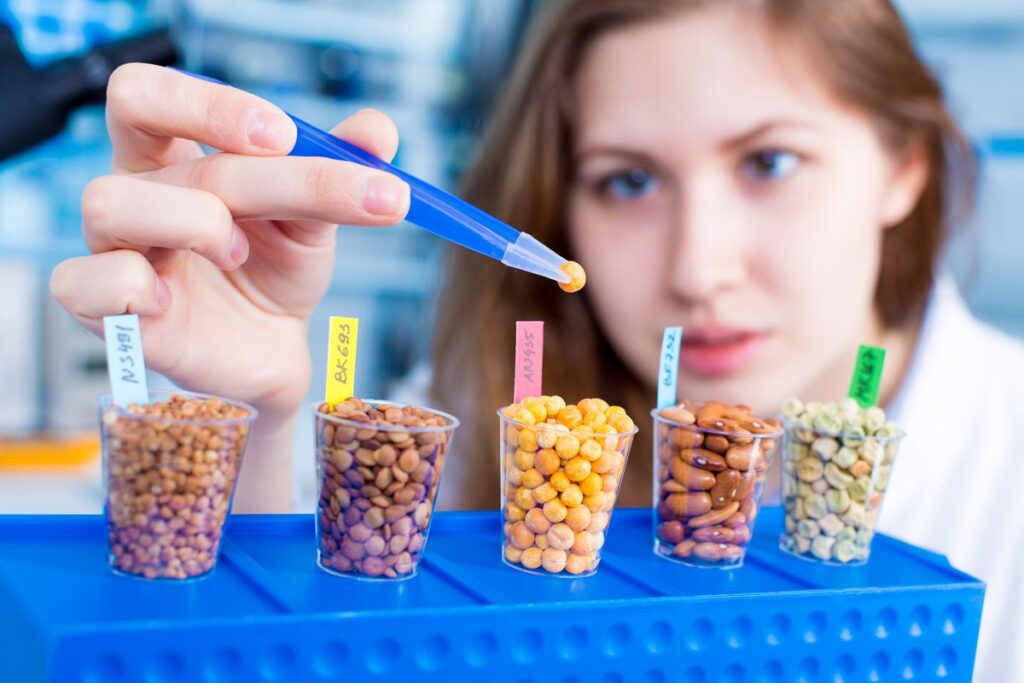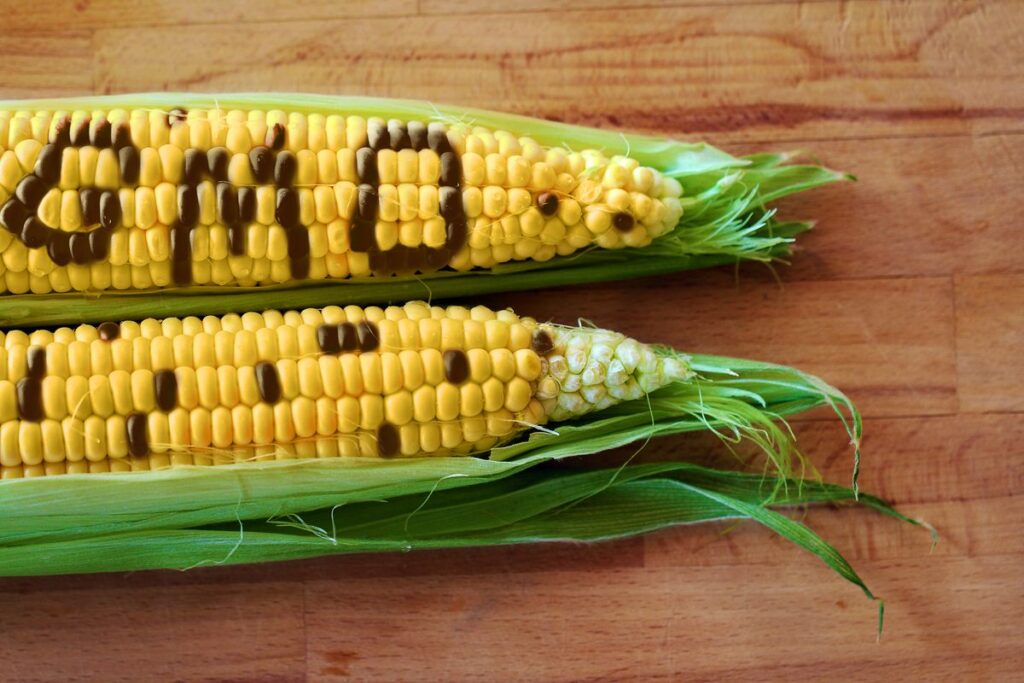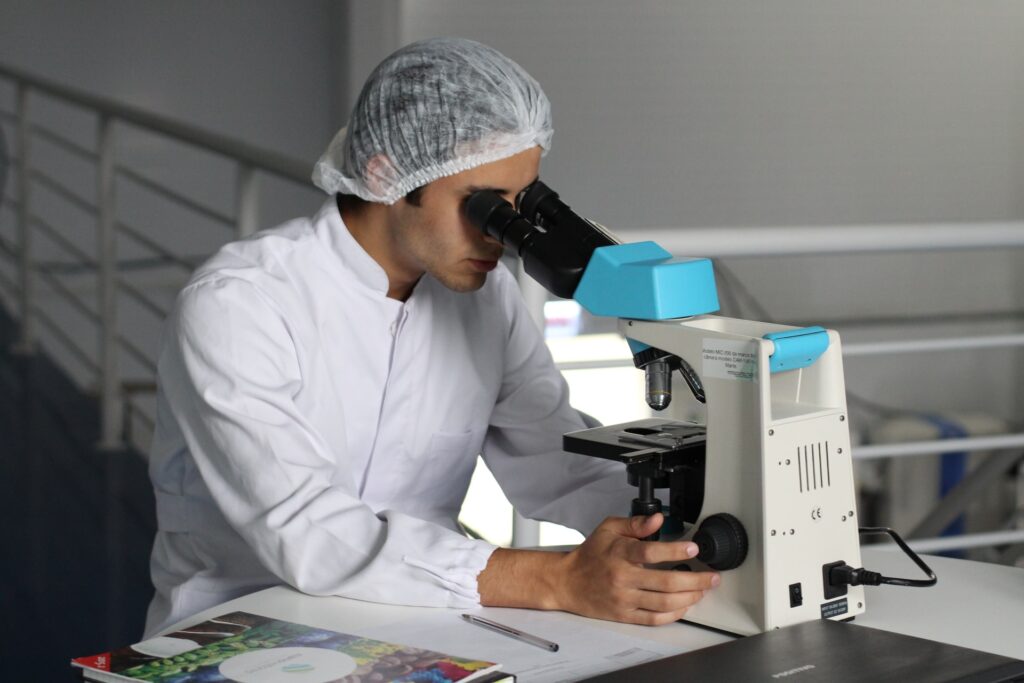The Science Behind Genetically Modified Food

Genetically Modified (GM) foods/crops are grown on more than 10% of the world’s cropland. Scientists all over the world believe that genetically modified crops can solve the world’s hunger problem. Concerns about health and the environment remain prevalent. What are GM crops, and what are their advantages and disadvantages? Let’s find out in this post…
GM food, as the name implies, involves the editing of a crop’s genes in such a way that it incorporates beneficial traits from another crop or organism. It is a different process than planting a crop in your backyard when you learn DIY techniques. This could imply altering the plant’s growth pattern or making it resistant to a specific disease. Food produced from the edited crop is referred to as GM food. This is accomplished through the use of genetic engineering tools.
How is it Done?

Say that scientists intend to develop wheat with high protein content and opt to use beans as a protein source. To accomplish this, a specific sequence of DNA with protein-making traits is isolated from the bean (known as the donor organism) and inserted into the gene structure of wheat in a laboratory process.
The newly created gene or transgene is then transferred into the recipient cells (wheat cells). The cells are then grown in tissue culture to become plants. The new DNA structure will be passed down to the seeds produced by these plants.
Traditional seed cultivation will then begin, and we will have genetically modified wheat with high protein content. The characteristic can be anything. DNA from a pest-resistant plant can be introduced into another plant variety, resulting in the pest-resistant trait in the second plant variety.
Blueberry DNA could be inserted into a banana DNA to produce a blue banana. The exchange may take place between two or more organisms. For example, you can even introduce a fish gene into a plant.
You don’t think so? Consider the following. To make tomatoes frost resistant, genes from an Arctic fish were inserted. This tomato earned the nickname “fish tomato.” However, it never made it.
Benefits of Genetically Modified Crops
GM crops are thought to benefit both producers and consumers. Some of the major advantages are as follows:
- Crop protection can be improved through genetic engineering. Crops that are more resistant to pests and diseases can be developed. Herbicide and pesticide use can be reduced or eliminated.
- Farmers can increase their income by producing a higher yield.
- Nutritional value can be increased.
- Food’s shelf life can be extended with the help of the top flexible packaging companies from www.logos-pack.com, as packaging plays an important role in the food industry.
- It is possible to produce food with improved flavor and texture.
- Crops can be engineered to withstand harsh weather conditions.
Reason for Stiff Opposition to GM Foods

Following are some of the top reasons we have gathered why GM foods are often opposed:
- Unintended consequences of genetically engineered foods are common. Genetic engineering is a new field
- with unknown long-term consequences. There has been very little testing on genetically modified foods.
- Some of the popular crops have been genetically modified in order to produce their very own pesticides. Non-targets, such as farm animals, may be harmed if they consume them. Toxins can also cause allergies and interfere with digestion in humans.
- Furthermore, antibiotics are added to GM crops to kill germs and pests. And when we eat them, these antibiotic markers remain in our bodies, making actual antibiotic medications less effective over time, potentially leading to superbug threats. This means that illnesses will become more difficult to treat.
- Activists point to social and economic factors in addition to health and environmental concerns. They have expressed grave concern about big agribusiness businesses assuming control of farming from small farmers.
- Farmers may face financial hardship as a result of their reliance on GM seed firms.
- Farmers are hesitant because their rights to keep and reuse seeds will be limited.
- Their main concern is finding a market that will accept GM food.
- People are generally skeptical of GM crops because they are engineered in a lab and do not occur naturally.
Health and Safety
There is scientific consensus that food generated from GM crops provides no greater hazard to public health than normal food. But that each GM product must be examined separately before being released. Nonetheless, the general public is much less likely than scientists to believe that GM foods are safe.
Genetically modified foods’ legal and regulatory status differ from country to country, with some outlawing or banning them and others allowing them with varying degrees of restriction. Opponents argue that long-term health risks have not been adequately assessed and propose a variety of additional testing, labeling, and market withdrawal options.
Testing

The legal and regulatory status of genetically modified foods varies by country, with some countries prohibiting or restricting them and others allowing them with varying degrees of regulation.
Countries such as the United States, Canada, Lebanon, and Egypt use substantial equivalence to determine whether additional testing is necessary, whereas many countries such as the European Union, Brazil, and China only permit GMO cultivation on a case-by-case basis.
In the United States, the FDA determined that genetically modified organisms (GMOs) are “Generally Recognized as Safe” (GRAS) and thus do not require additional testing if the GMO product is substantially equivalent to the non-modified product.
If new substances are discovered, additional testing may be necessary to address concerns about potential toxicity, allergenicity, gene transfer to humans, or genetic outcrossing to other organisms. Some studies purporting to show harm have been discredited, leading to academic condemnation of the researchers in some cases, such as the Pusztai and Séralini cases.
Final Thoughts
Taking everything into account, GM crops are alive; they can migrate and spread globally. In this regard, clear signals should be sent to biotech companies to proceed with caution in order to avoid unintended harm to human health and the environment.
Consumers are widely believed to have the right to demand mandatory labeling of GM food products, independent testing for safety and environmental impacts, and liability for any damage caused by GM crops.




